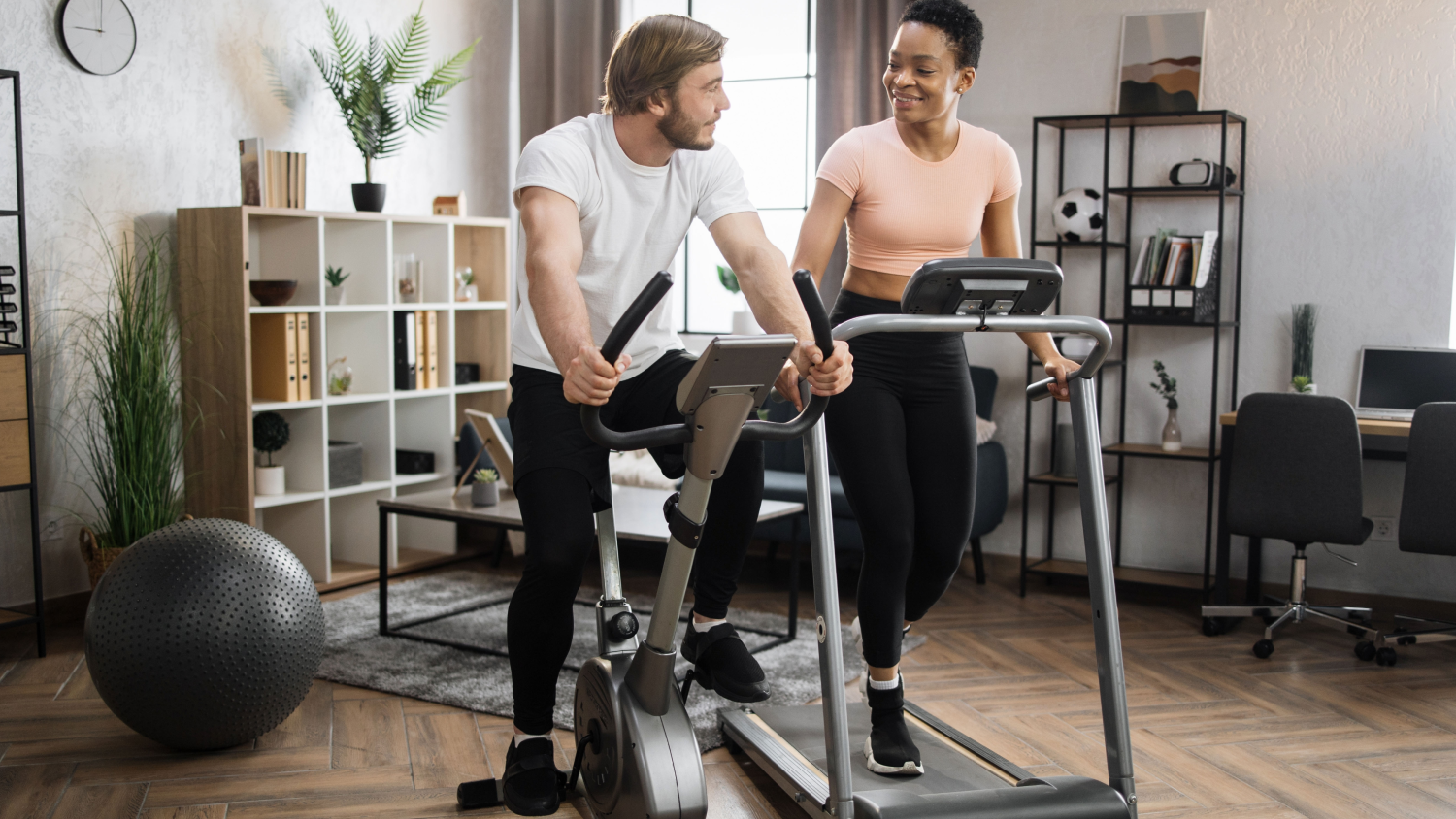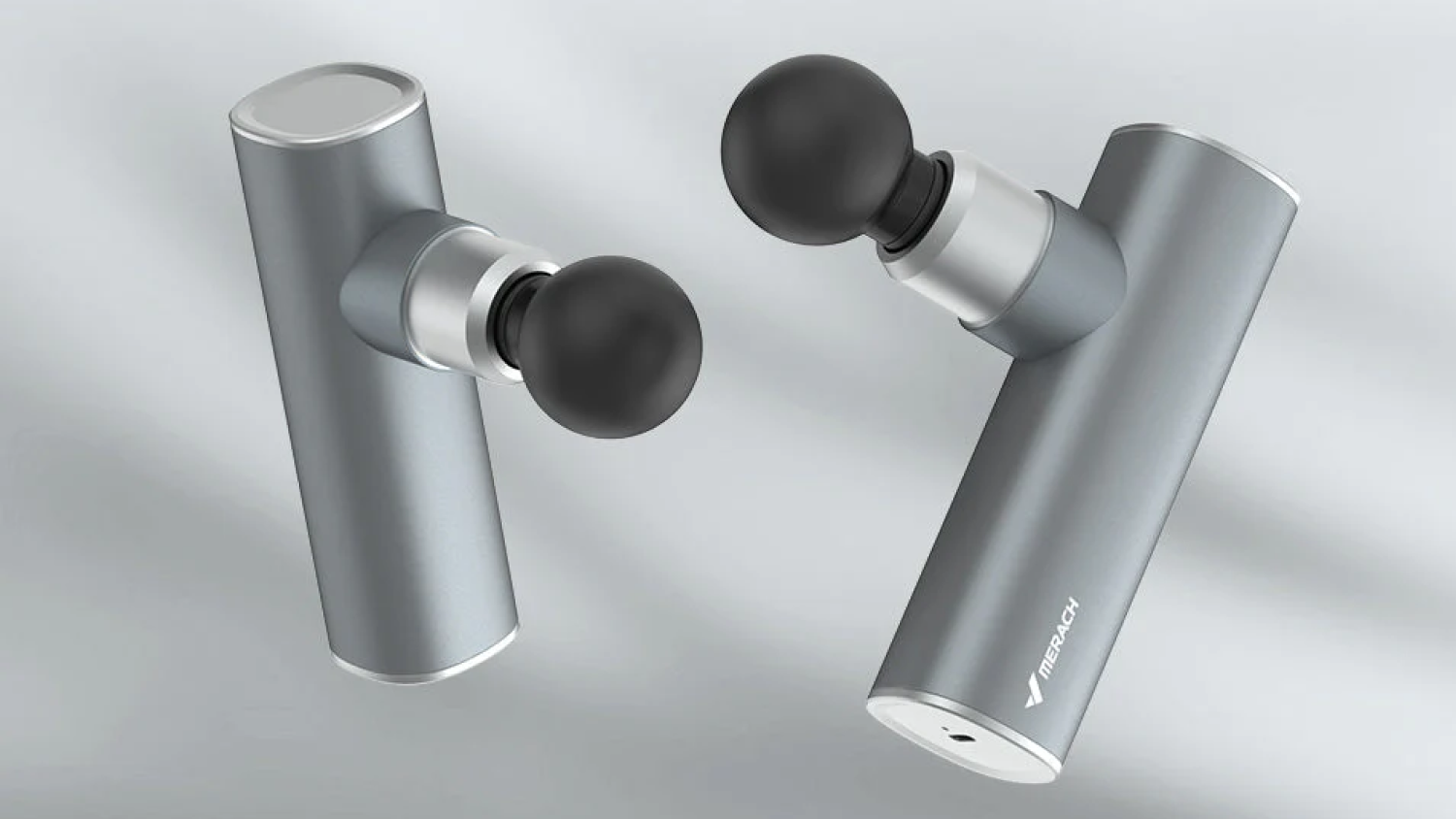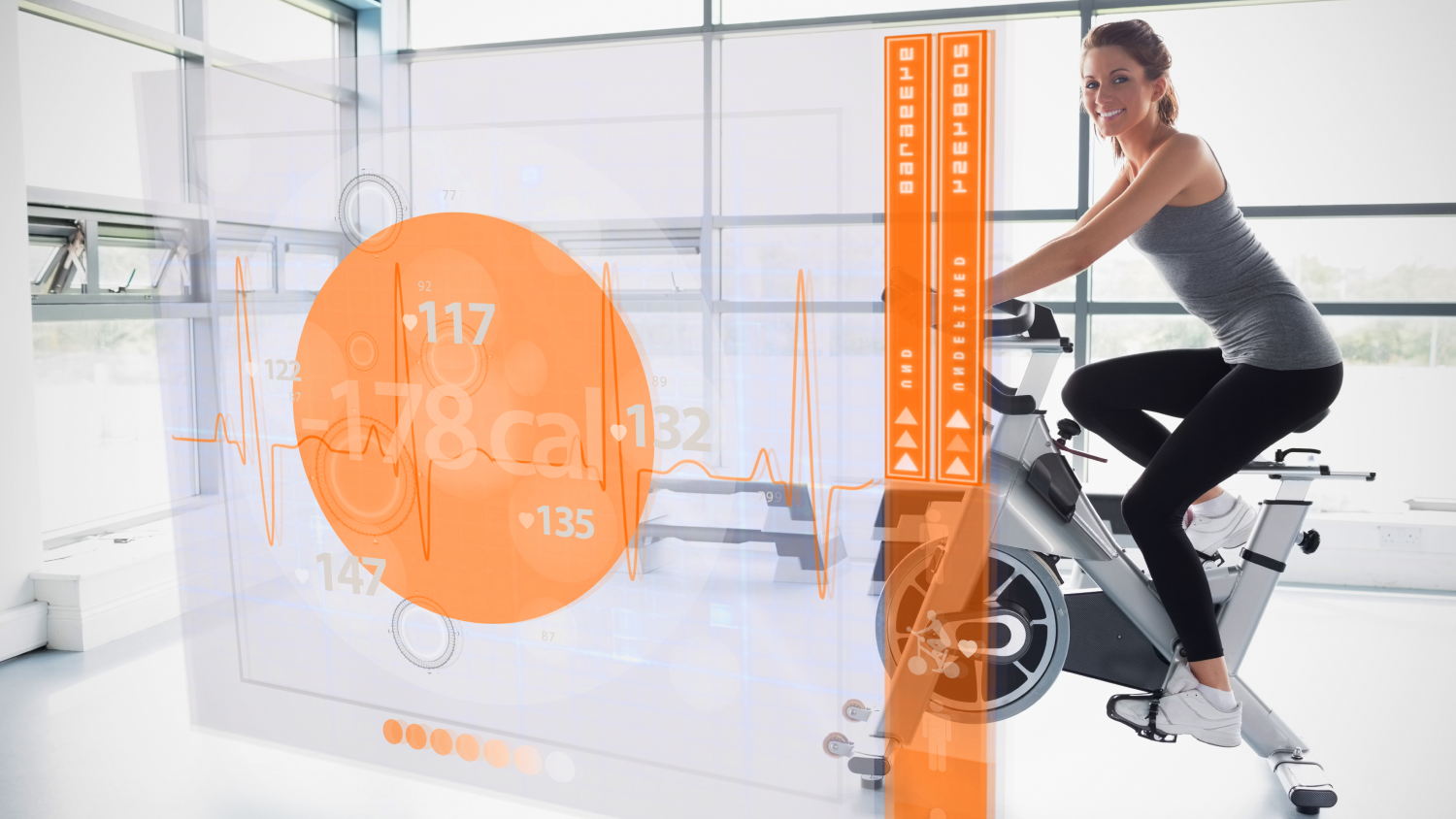Nowadays, more and more people tend to build a home gym and choose some equipment to help them exercise. Having a home gym gives them the flexibility when they exercise and avoid the negative effects of a sedentary lifestyle. Among the most popular exercises is cardio training, which helps burn calories, improve physical fitness, and tone the body.
Stationary bikes, treadmills, elastic bands for stretching, inflatable Pilates balls, weight benches...which exercise machine is right for you? Among the most popular choices for home and gym workouts are the stationary bike and treadmills. Both are good options for strengthening your cardiovascular health, burning calories, and releasing endorphins. But do we work the same in both? Is one better than the other? Which one helps me with weight loss or cardio?
In this article, we'll explain it to you based on factors such as their age, the condition of their joints, or simply personal preference. By understanding the unique advantages and disadvantages of each, you can make an informed decision that aligns with your personal fitness journey and helps you achieve your desired results.
1. What Are Stationary Bikes Good For?
A stationary bike simulates cycling indoors with pedals, a seat, handlebars, and a weighted flywheel for resistance. Adjustable resistance levels allow varied intensity, from leisurely rides to challenging climbs, with some models offering pre-programmed workouts.

Pros of Stationary Bikes
- Low impact: Stationary bikes are gentle on joints, minimizing stress on knees, hips, and ankles. This makes them ideal for individuals with joint pain, injuries, or those seeking a gentler exercise, including seniors.
- Cardiovascular health: They provide excellent cardiovascular workouts, strengthening your heart and lungs, improving endurance, and reducing heart disease risk. You can easily control heart rate by adjusting speed and resistance.
- Muscle toning: Primarily a cardio machine, stationary bikes effectively engage lower body muscles like quadriceps, hamstrings, glutes, and calves, leading to improved tone and strength.
- Convenience and safety: Compact and safe, exercise bikes fit well in home gyms with no fall risk, making them a popular choice for home workouts.
- Multi-tasking friendly: The seated position allows for easy multi-tasking, such as reading, watching TV, or working, making workouts more enjoyable and efficient.
Cons of Stationary Bikes
- Limited muscle engagement: Compared to treadmills, stationary bikes engage fewer muscle groups, primarily targeting the lower body. This may require incorporating other exercises for a full-body workout.
- Lower calorie burn: While effective, stationary bikes typically burn fewer calories per minute than treadmills at similar exertion levels due to their non-weight-bearing nature and less muscle involvement.
- Monotony: The repetitive motion can become monotonous for some, potentially leading to a lack of motivation if not varied with different routines or entertainment.
- Discomfort: Users might experience glute or perineum discomfort during longer rides if the seat isn't properly adjusted. A comfortable seat or padded shorts can help alleviate this.
2. What Are Treadmills Good For?
A treadmill allows for indoor walking, jogging, or running on a moving belt with adjustable speed and incline, simulating various terrains and intensities.

Pros of Treadmills
- High calorie burn: Treadmills excel at burning calories quickly, making them ideal for weight loss.
- Full-body engagement: Running on a treadmill engages more muscles than a stationary bike, providing a more comprehensive workout.
- Weight-bearing exercise: Treadmill workouts are crucial for bone density.
- Versatility: Treadmills offer diverse workout options, preventing boredom.
- Mimics natural movement: The motion simulates outdoor running, which is great for athletes.
Cons of Treadmills
- High impact: Treadmills can be hard on your joints.
- Space and cost: They are larger, heavier, and more expensive than stationary bikes.
- Noise: Treadmills can be noisy.
- Fall risk: There's a higher risk of falling.
- Less multi-tasking friendly: It's hard to multi-task on a treadmill.
3. Stationary Bike vs Treadmill: Key Differences
When choosing between a stationary bike and a treadmill, understanding their fundamental differences is crucial. These distinctions can significantly impact your workout experience and how effectively each machine helps you achieve your fitness goals. Let's break down the key areas where these two popular cardio machines diverge.
Calories Burned: Treadmill vs. Stationary Bike
Generally, treadmills burn more calories per minute than stationary bikes due to their weight-bearing nature and greater muscle engagement. A 150-pound person might burn around 530 calories/hour on a treadmill versus 480 calories/hour on a stationary bike. Exact calorie burn varies by individual factors, but HIIT on either machine can significantly boost expenditure.

Impact & Intensity
Treadmills are high-impact, stressing joints like ankles, knees, and hips with each stride, even with cushioning. This can be problematic for those with pre-existing joint conditions. Stationary bikes, however, offer a remarkably low-impact workout, with no jarring impact on your joints. This makes them ideal for rehabilitation, seniors, or anyone seeking a gentler exercise. If you have concerns about knee, hip, or back issues, an exercise bike is generally the safer bet.

Muscle Engagement
Both machines work your lower body, but treadmills engage a broader range of muscles, including quadriceps, hamstrings, glutes, calves, and core, due to the need for balance and continuous movement. Stationary bikes primarily target quadriceps, hamstrings, and glutes, offering less upper body and core engagement. For comprehensive lower-body toning and overall muscle activation, a treadmill has a slight edge, though other exercises can supplement either choice.

Age & Comfort
For seniors or individuals with balance issues, the stationary bike is more accessible due to its seated position, eliminating fall risks associated with a treadmill. Its stability and support make it a comfortable and safe choice. Treadmills require more coordination and balance, posing a greater fall concern. Stationary bikes, with features like step-through designs, enhance user-friendliness for diverse ages and physical abilities.

Convenience and Space
Stationary bikes are generally more compact, lighter, and less expensive than treadmills, making them ideal for smaller spaces and home gyms. They are also typically quieter, especially magnetic resistance exercise bikes, which is beneficial for shared living environments. Treadmills, conversely, are larger, heavier, and can be noisy, particularly at higher speeds. For home gyms where space and noise are concerns, an exercise bike often presents a more practical solution. However, if you have limited space at home but still want to use a treadmill for exercise, you can choose a foldable treadmill for home.

Stationary Bike vs. Treadmill Overall Evaluation
To summarize the key differences, here's a comparative table:
| Feature | Stationary Bike | Treadmill |
|---|---|---|
| Calorie Burn | 478.8-628.8 kcal/h | 490.8-646.8 kcal/h |
| Joint Impact | Very low | High |
| Muscle Engagement | Lower body: quads, hamstrings, glutes | Full body: lower body, core, some upper body |
| Fall Risk | Very low | Higher |
| Space | Compact | Larger footprint |
| Cost | Affordable | Expensive |
| Noise Level | Quiet | Can be noisy, especially at higher speeds |
| Multi-tasking | Easy | Challenging |
| Suitability for Seniors | Excellent | Moderate |
4. Stationary Bike vs Treadmill For Weight Loss
When your primary goal is weight loss, both stationary bikes and treadmills can be highly effective tools. Treadmills generally offer a higher calorie burn per minute, especially with moderate to high intensity running or incline walking, due to full-body engagement and weight-bearing exercise.
A vigorous treadmill session can burn 700-1000+ calories per hour. Stationary bikes, while burning slightly fewer calories per minute, are low-impact, allowing for longer workout durations. A moderate cycling session can burn 400-600+ calories per hour. HIIT on either machine is effective for boosting metabolism and calorie expenditure. Consistency and total calorie expenditure over time are key for weight loss.
Which is Better for You?
The choice between an exercise bike or treadmill for weight loss ultimately depends on your personal preferences, physical condition, and fitness goals. Consider the following factors:
| Goal | Stationary Bike | Treadmill |
|---|---|---|
| Weight Loss | High and more efficient fat burning | Moderate to high Requires resistance to achieve efficient fat burning |
| Cardio | Suitable for high-intensity cardio | Suitable for long-duration cardio |
| Joint Protection | Superior choice | Higher impact |
| Seniors | Highly recommended | Can be used with caution |
| Overall Versatility | Good for endurance and lower body strength; limited upper body engagement. | Excellent for varied workouts (walking, jogging, running, incline) |
Whether you use treadmills or stationary bikes for weight loss, combined with a healthy diet, will lead to the goal. If you're looking for a low-impact way to burn calories consistently, the stationary bike is a fantastic option.
If you prefer a more intense, higher-calorie-burning workout and your joints can withstand the impact, the treadmill might be a better option. Finding an exercise routine you genuinely enjoy is far more impactful than chasing marginal differences in calorie burn. For me, the ability to watch a show or read a book on a stationary bike often means I'll stick with it longer, leading to more consistent workouts and better results over time.
5. FAQs About Stationary Bike vs Treadmill
Here are some frequently asked questions to help you further clarify your choice between a stationary bike and a treadmill.
Q1: Are stationary bikes better than treadmills for beginners?
For beginners, stationary bikes often present a more approachable and safer option. Their low-impact nature reduces the risk of injury, which is a common concern for those new to exercise. The seated position provides stability, eliminating the balance challenges and fall risks associated with treadmills. This allows beginners to focus on building cardiovascular endurance and leg strength without the added stress on their joints.
Q2: Should I choose a treadmill or an exercise bike for belly fat?
Neither a treadmill nor an exercise bike directly targets belly fat. The concept of spot reduction is a myth. To reduce belly fat, you need to achieve overall fat loss through a combination of consistent calorie-burning exercise and a healthy, balanced diet. Both stationary bikes and treadmills are excellent tools for burning calories and contributing to this overall fat loss. So, whether it's a treadmill or exercise bike for belly fat, consistency is key.
Q3: Is a treadmill or a stationary bike better for cardio?
Both treadmills and stationary bikes are highly effective for improving cardiovascular health. They both elevate your heart rate, strengthen your heart muscle, and improve your body's ability to deliver oxygen to your muscles. The 'better' option depends on your personal preference and physical condition. If you enjoy running or walking and your joints can handle the impact, a treadmill offers a dynamic cardio workout that engages more muscle groups. If you prefer a low-impact option, have joint issues, or want to multi-task during your workout, a stationary bike provides an excellent cardiovascular challenge without the stress on your joints.
6. Conclusion
It's clear that both stationary bike and treadmill are powerful allies in your fitness journey. There isn't a single 'best' option; instead, the ideal choice hinges on your individual fitness goals, physical condition, personal preferences, and lifestyle. If your priority is a calorie-burning workout for weight loss, and your joints can handle the impact, a treadmill might be your perfect match.
Conversely, if you're seeking a low-impact exercise solution that's gentle on your joints, offers a safe and stable workout, and allows for comfortable multi-tasking, the stationary bike stands out. It's an excellent choice for sustained cardio workouts, rehabilitation, or for those who prioritize joint health and quiet operation.
Ready to transform your home workouts and discover the perfect fitness solution for your goals? Explore high-performance cardio equipment designed to match your unique needs. At Merach, we offer a range of innovative machines, from the intense, calorie-torching challenge of a treadmill to the smooth, joint-conscious motion of a stationary bike, each engineered to deliver personalized, effective, and engaging exercise right at home. Find your ideal workout companion today and start every session with confidence and purpose.































Leave a comment
All comments are moderated before being published.
This site is protected by hCaptcha and the hCaptcha Privacy Policy and Terms of Service apply.